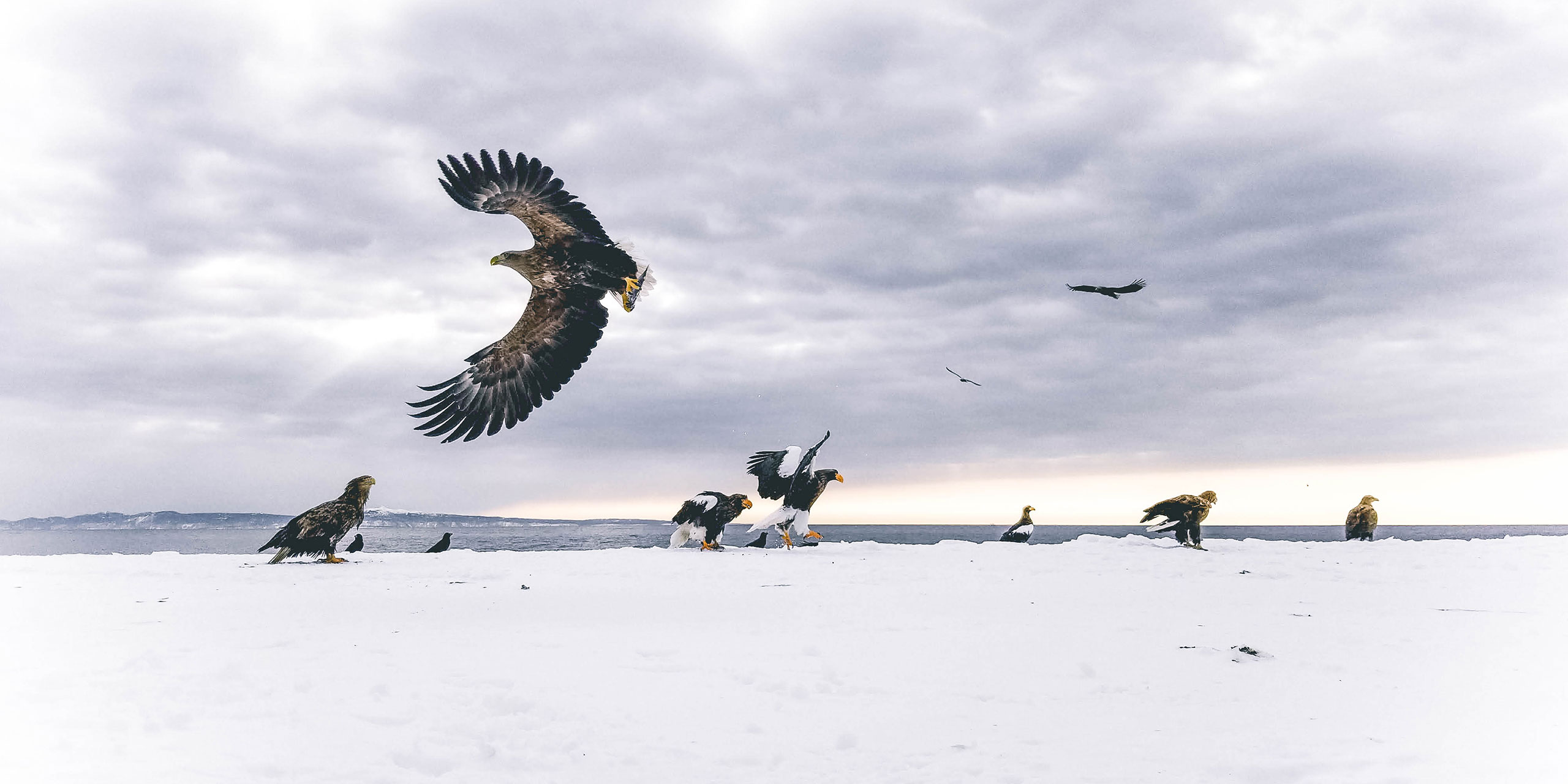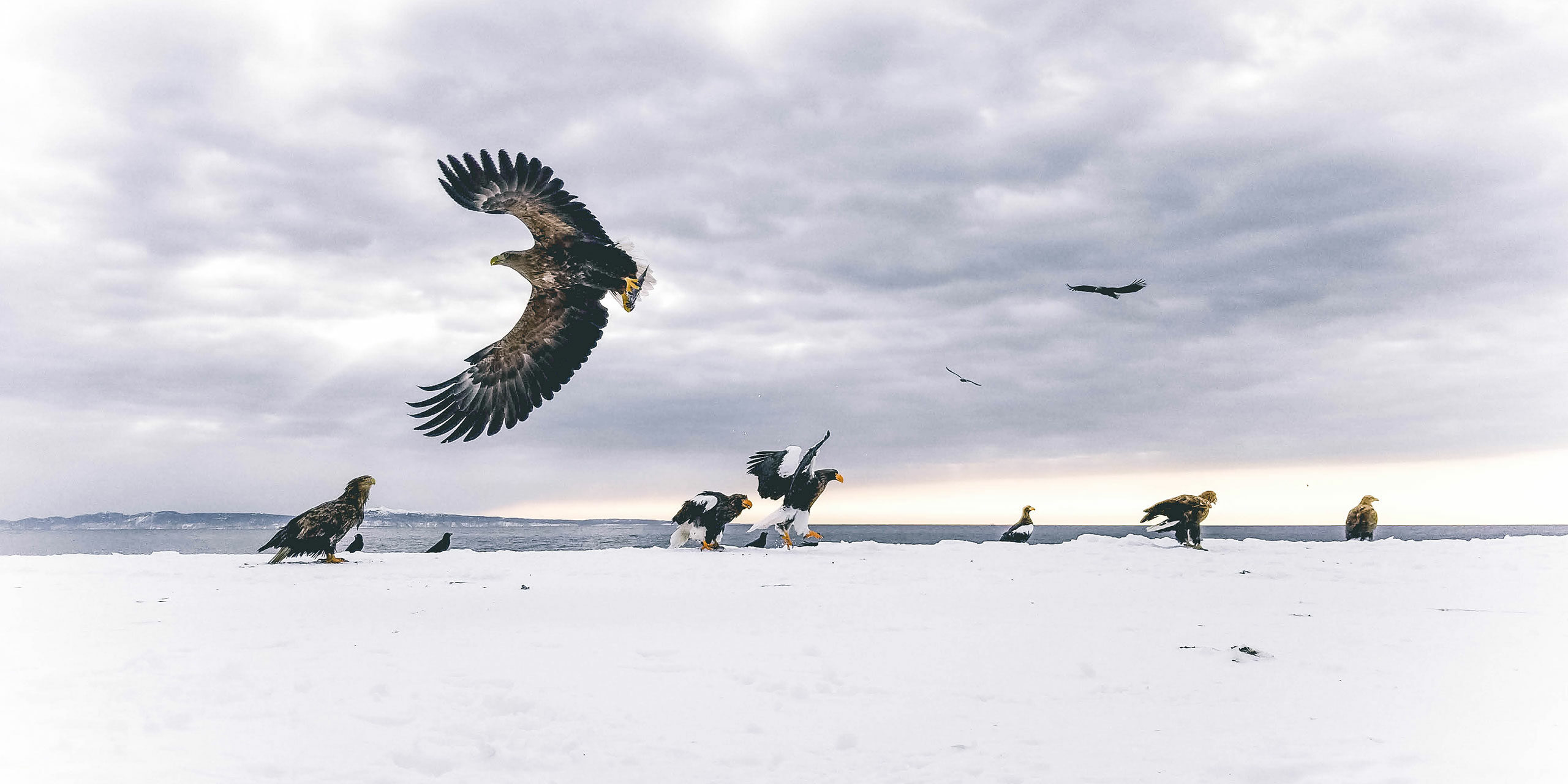
Japan is the land of complex food, luxe hotels, and unique cultures, but the country’s wild heart sits in the great white north of Hokkaido, the northernmost and second largest of Japan’s four main islands. Until the mid-fifteenth century, only the hunter-gatherer indigenous Ainu people lived on this rugged terrain of volcanic mountains, marshlands, and pine forests surrounded on all sides by icy seas. The legacy of the Ainu peoples’ keen respect for nature endures today, as Hokkaido largely remains an unspoiled natural wonderland with many opportunities for outdoor winter adventure.
Kushiro for Akan International Crane Center
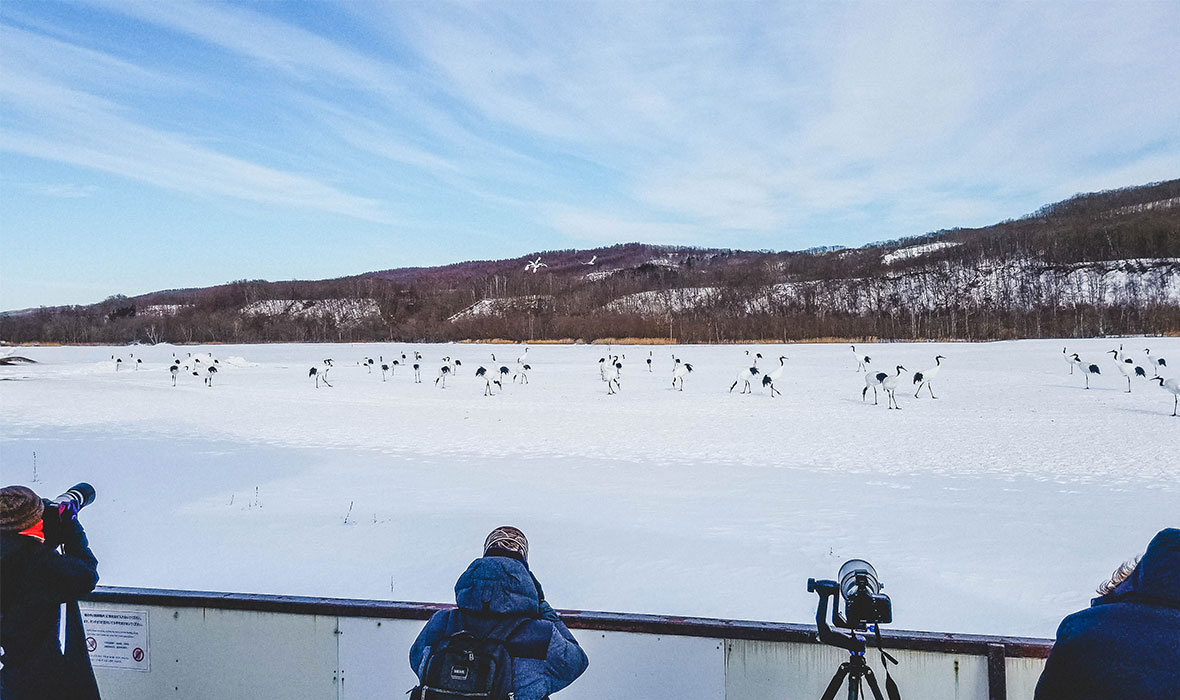
The marshes surrounding Hokkaido’s eastern city of Kushiro is a paradise for any bird watcher or wildlife enthusiast. From November through March, travelers head to the Akan International Crane Center to see wild red-crowned cranes in their natural environment. Named after the iconic patch of red bare skin on its head, the elegant red-crowned crane (also known as the tancho crane) was brought back from the brink of extinction in the mid-twentieth century due to coordinated winter feeding efforts and local support.
Now, about 1200 red-crowned cranes call Hokkaido home, with many regularly stopping at Akan International Crane Center’s grounds to feed. Those willing to brave an early wakeup and frigid temperatures will be rewarded with a view from Otawabashi Bridge of the tancho cranes roosting in the Setsurigawa River. As the dawn sun rises, it illuminates the mist coming off the water that partially shrouds the flocks of sleeping cranes. The birds take flight and soar across the lake and welcome the new day with their distinctive calls.
Lake Akan for ski-shoeing
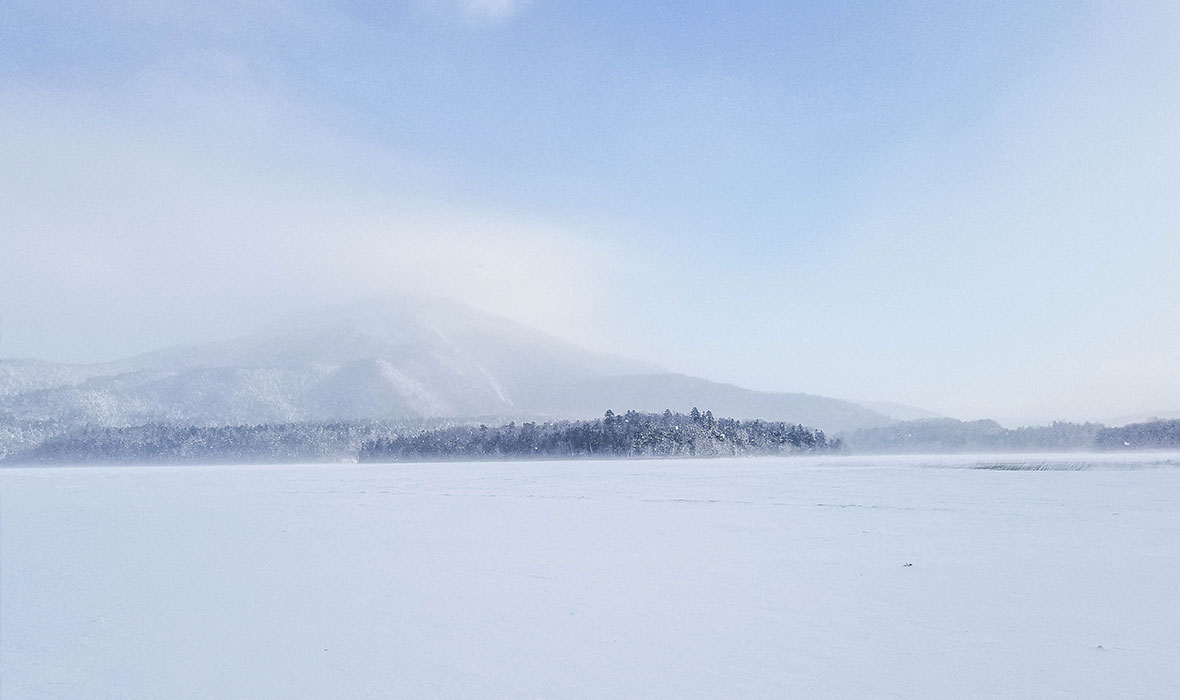
If physical activity is more your style, the quaint resort town next to Lake Akan features a large caldera lake nestled in a primeval forest. In the winter, the lake freezes over, allowing visitors to enjoy family-fun activities such as ice skating, snowmobiling, and even ice fishing. The real highlight, however, is the chance to take a guided mud volcano forest snow walk with Tsuruga Adventure Base SIRI. A hybrid of snow-shoeing and cross-country skiing, ski-shoeing is perfect for beginners and those looking to try something new.
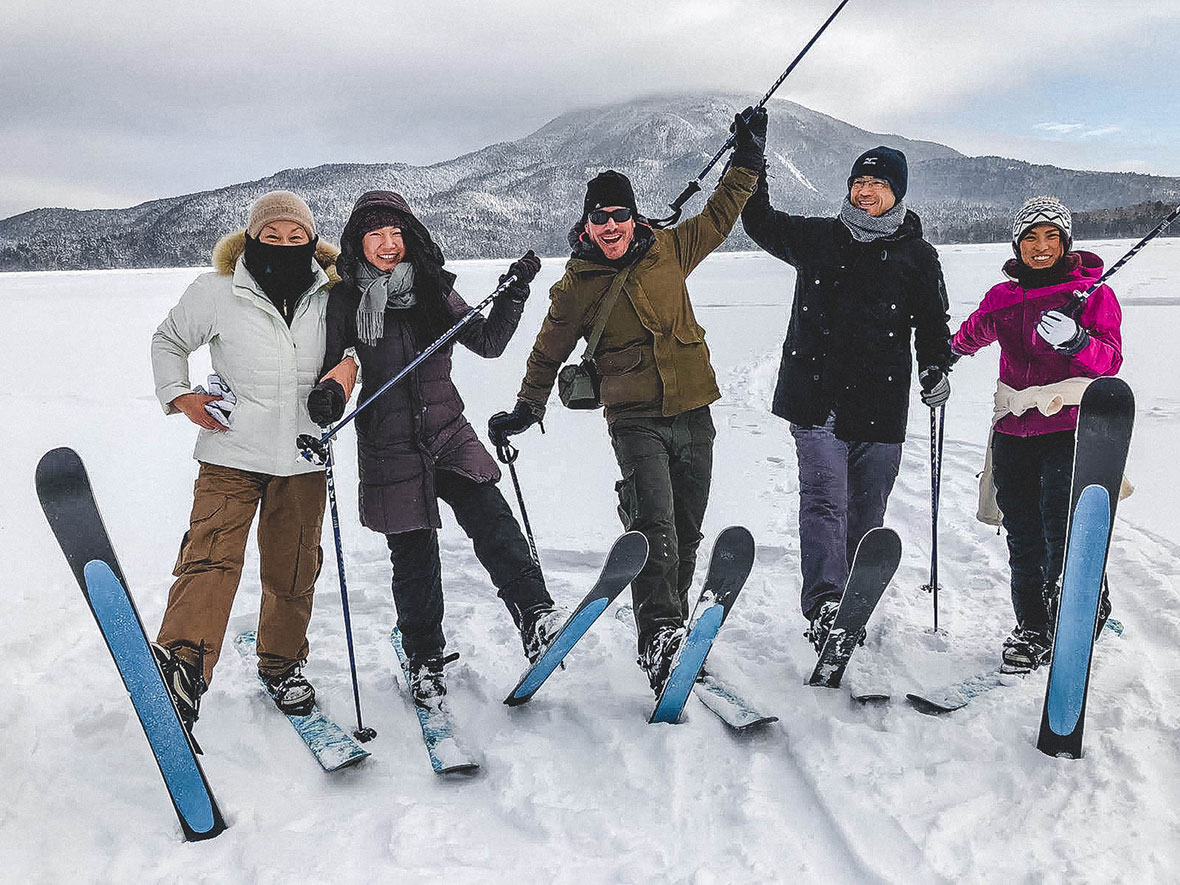
Travelers glide across the snow-covered woods seeking bokke, patches of bubbling volcanic mud that release dramatic waves of steam. Along the way, you can stop by a hidden shrine marked by its brilliant vermillion torii gate and have the chance to see foxes, deer, and rabbits going about their day. Visitors glide back to the resort for a much-needed soak in the mineral-rich waters of your hotel’s onsen and then emerge from the woods to venture directly onto the virgin snow covering the far side of Lake Akan.
Teshikaga for Lake Mashu, Lake Kussharo, and Mount Iou
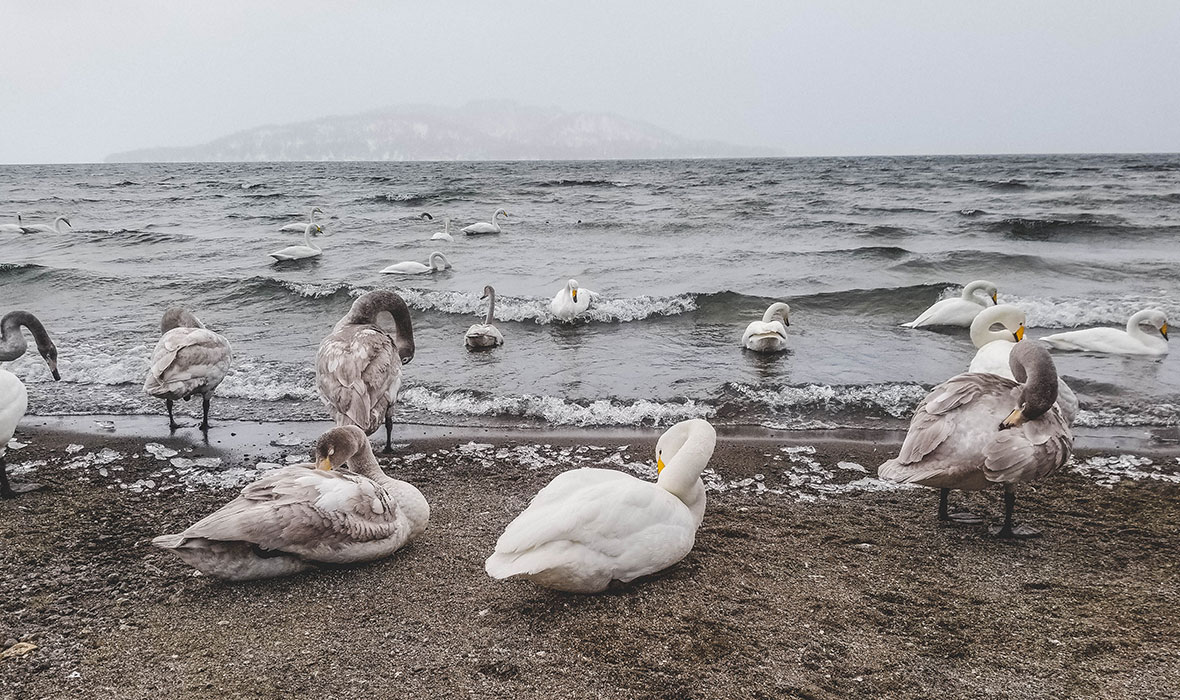
For postcard-perfect landscape scenery, there is Teshikaga’s Akan Mashu National Park. The first stop should be the legendary Lake Mashu, one of Japan’s deepest caldera lakes and known by the Ainu as the “Lake of the Gods.” Often shrouded in a dense mist, those lucky enough to see the lake on a sunny day will be treated to views of its blue waters perfectly reflecting the mountains surrounding the steep crater walls. After enjoying Lake Mashu’s tranquil beauty either from the observation deck or the hiking trail along its rim, travelers can take a short drive to Mount Io (Iozan), an active volcano known for its 1,500 fumaroles constantly spewing steam and sulfur dioxide hundreds of feet into the air.
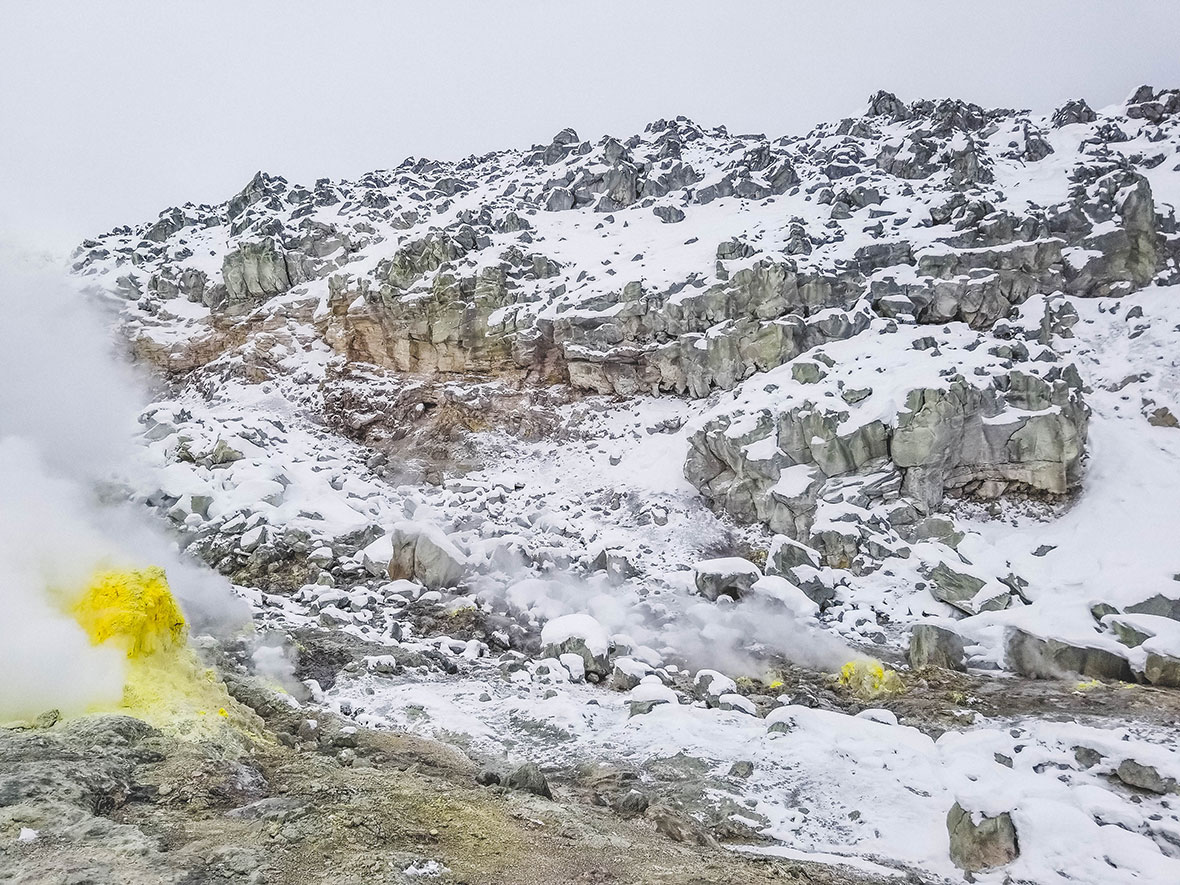
Visitors can venture close to the mountain’s otherworldly yellow sulfur deposits and boiling water bubbling from the earth just beneath their feet. Be sure to snack on an egg cooked by the mountain’s natural heat before departing for nearby Lake Kussharo, the largest caldera lake in Japan. Each winter, over 300 large whooper swans migrate to Hokkaido from Siberia, resting near Lake Kussharo’s sandy Sunayu beach. Here, geothermal spring water seeps into the frigid lake, creating a comfortable warmth for the birds. Bobbing languidly amongst floating chunks of ice or nestling on the shore’s naturally-heated sand, the whooper swans wait for the arrival of spring.
Kawayu and Notsuke Peninsula for winter canoeing, foxes, deer
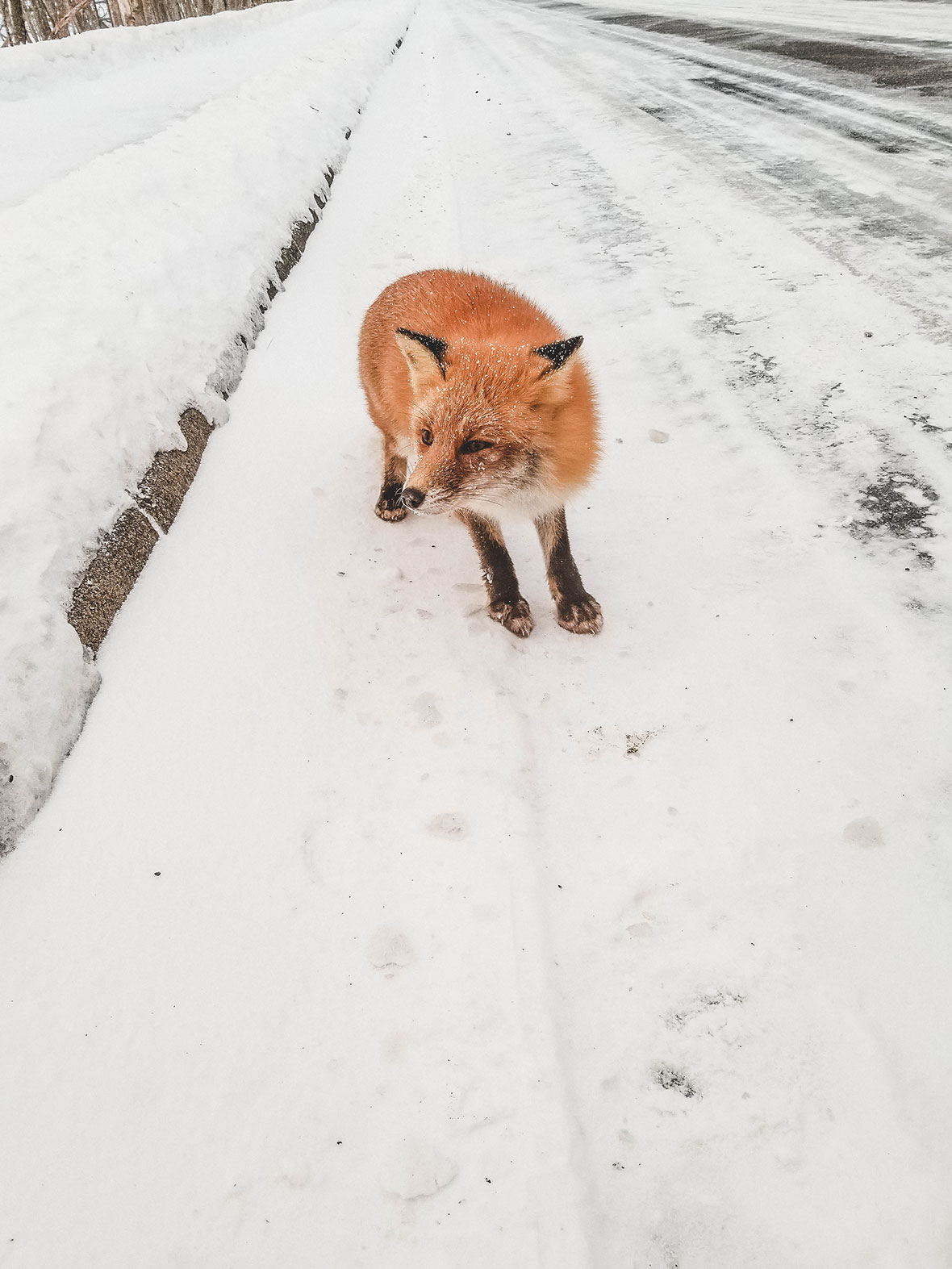
Hokkaido’s vast wilderness can make you feel as if civilization has fallen away, leaving you as the only person left in the world. For those who revel in this tranquil feeling, winter canoeing is a perfect activity. After being fitted with a dry suit, waterproof boots, and a life jacket, begin at the head of the Kushiro River, where it flows east from Lake Kussharo. Then float effortlessly downstream, hearing nothing except the trickling water and chirping birds.
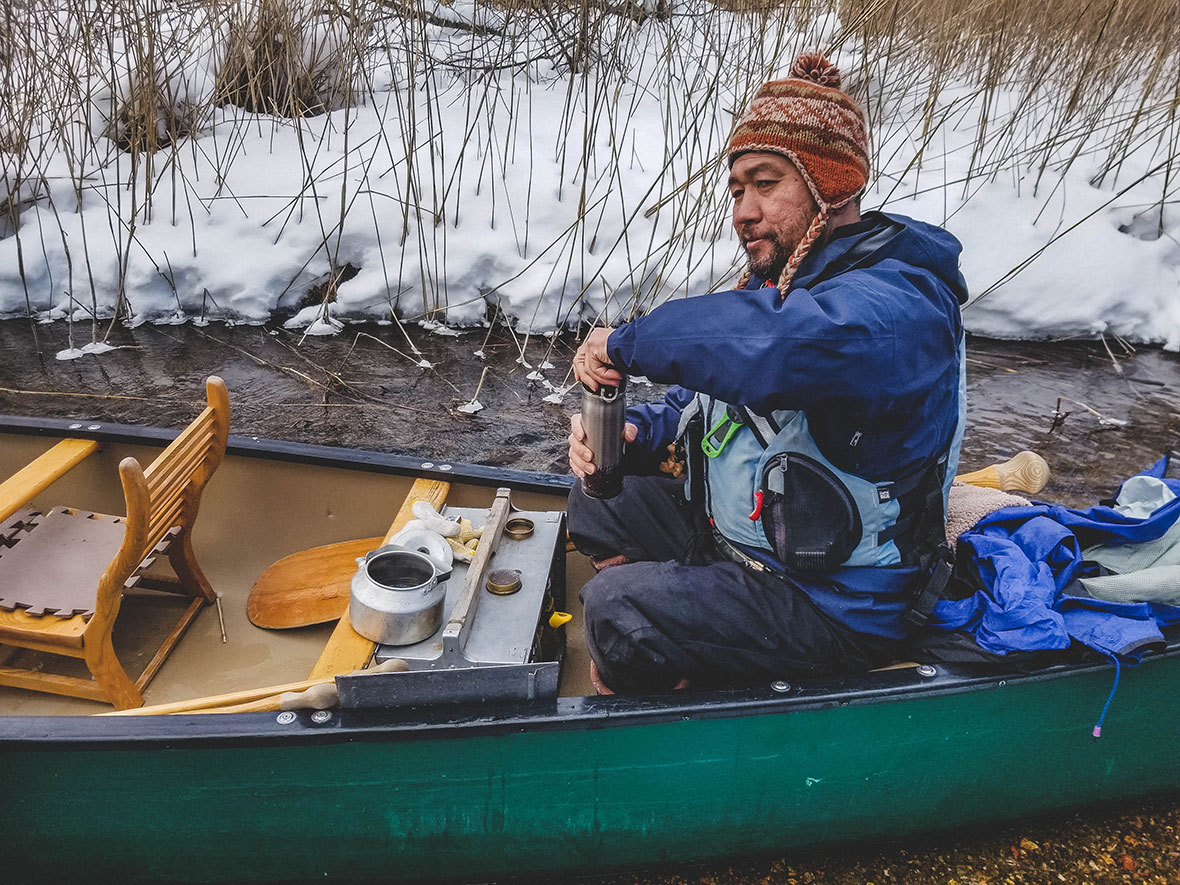
From the canoe, pebbles at the shallow river bottom are visible; tree branches bowed over from the weight of ice and snow line the river’s banks, sparkling in the mid-morning sunlight. A short break on the river bank to enjoy fresh coffee prepared on the canoe’s stove completes this unique experience. Continue your meditation in nature with a trip to the narrow Notsuke Peninsula, where the frozen Odaito Bay meets the Nemuro Strait.
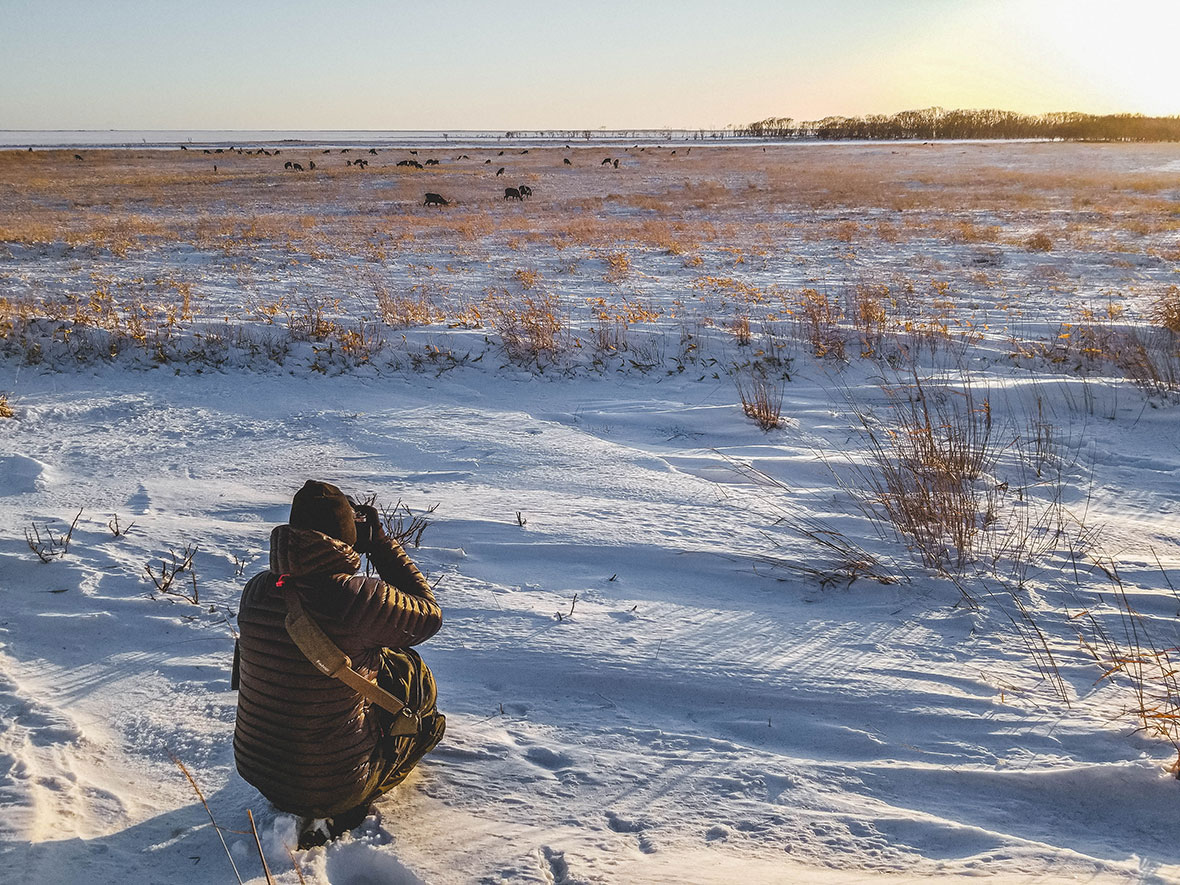
The barren trees within the salt marshes, the snow-capped rusted fishing boats and abandoned houses, the expansive blue sea from which the Kuril Islands — contested territories between Japan and Russia — are visible and create a stark yet beautiful landscape. Here, where nature has truly taken over, vast herds of Sika deer graze while solitary Ezo red fox scavenge for the discarded oysters left behind by the eagles soaring above.
Rausu and Shiretoko for eagles and drift ice walking
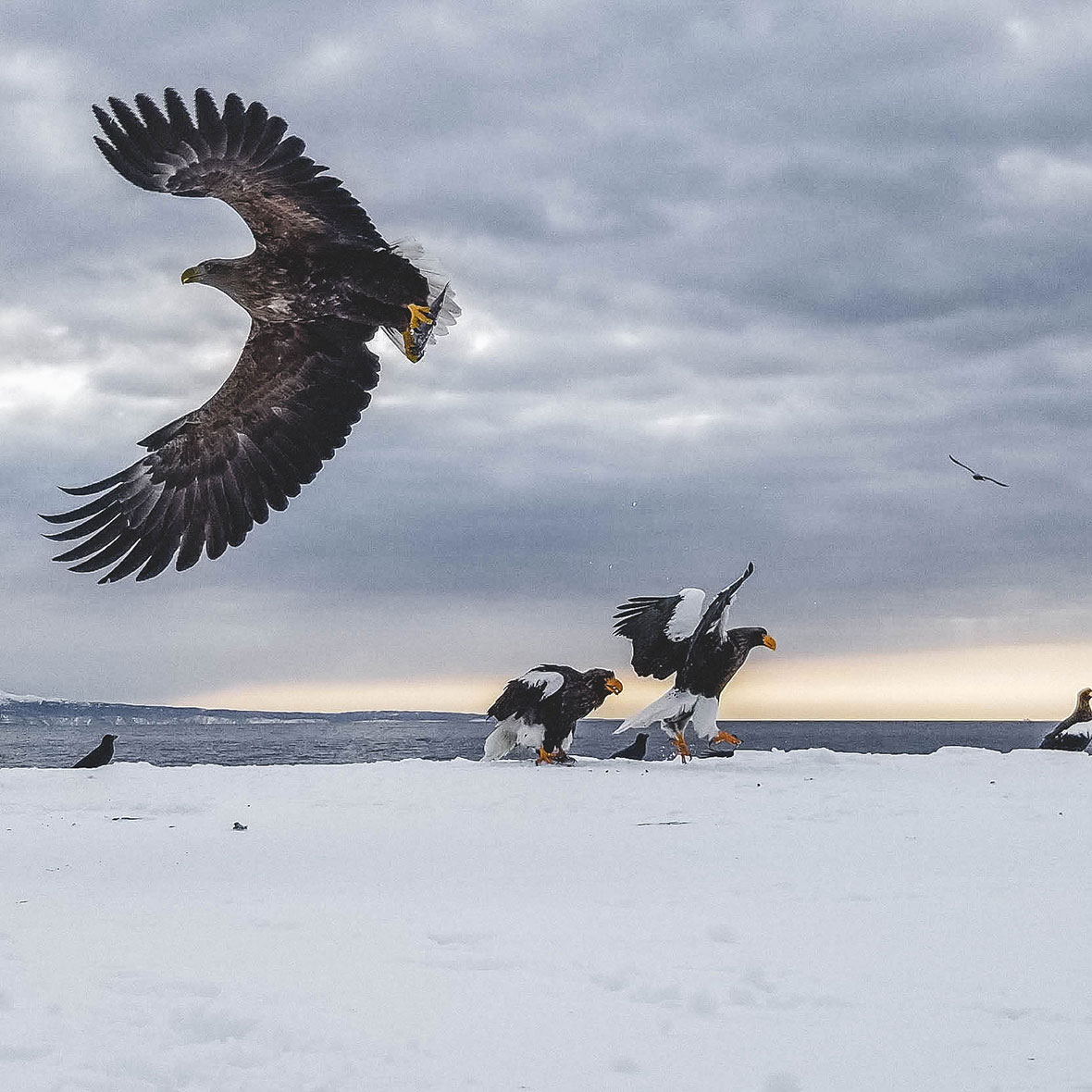
To top off your outdoors adventure, travel to the Shiretoko Peninsula in the northernmost part of eastern Hokkaido. Each winter, the Steller’s sea eagle — the heaviest species of eagle in the world — crosses the Sea of Okhotsk into Hokkaido from Russia. With the sun rising over Rausu’s harbor, witness this majestic rare bird compete with its cousin, the white-tailed eagle, for breakfast. The eagles will swoop from the cliffs and skim across the water, skillfully catching fish in their sharp talons mid flight. When the boat stops next to a sea wall, see the eagles devour their prey up close, leaving nothing but meager scraps for the crowding gulls. After deboarding the ship, head to Shiretoko National Park, a UNESCO World Heritage Site renowned for its rugged mountains, steep cliffs, and roaming grizzly bears.
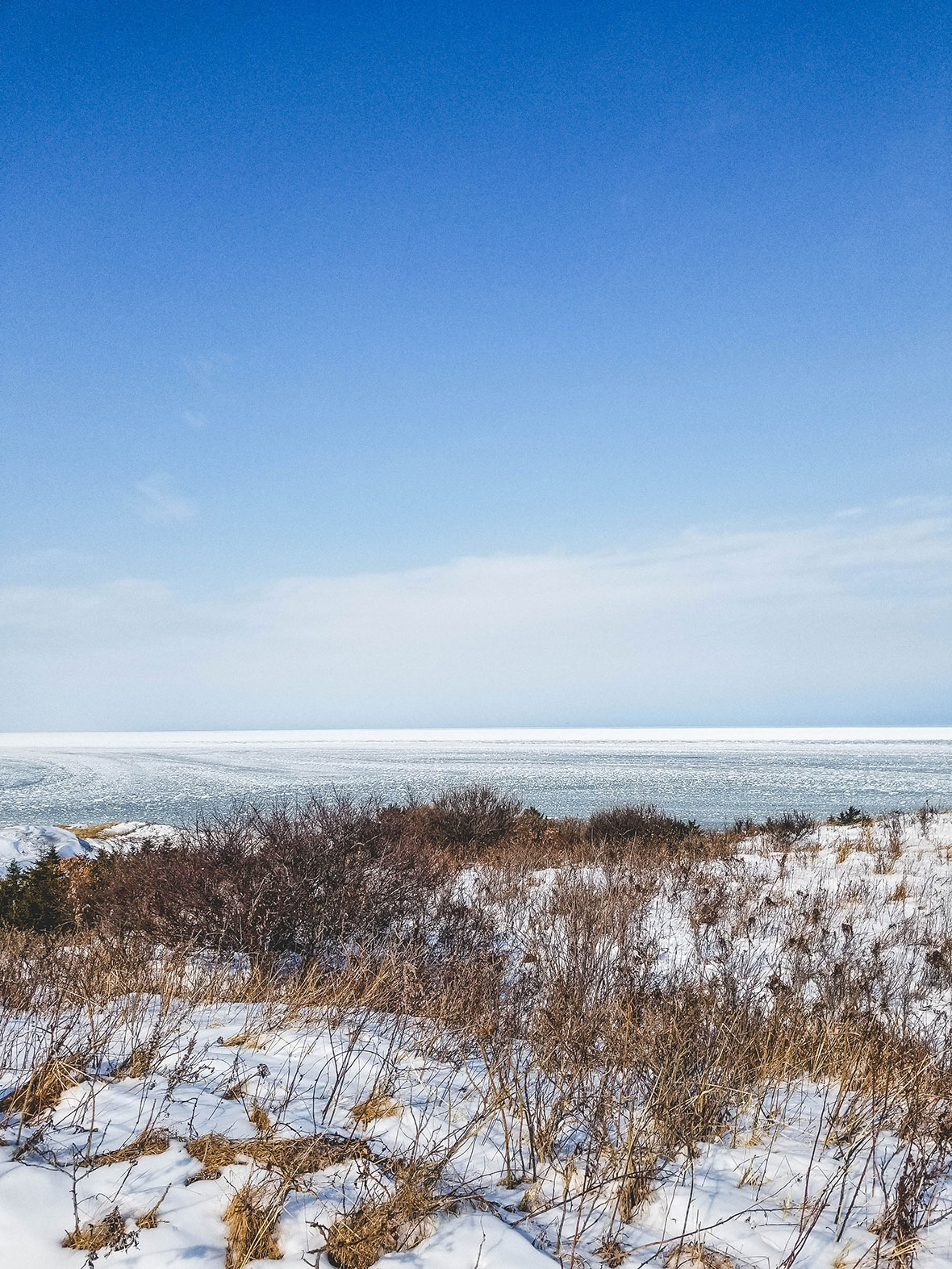
Each winter, masses of ice from Russia’s Amur River float across the sea, reaching the Shiretoko’s rocky shores by early February. Experience this unique icy landscape first hand by walking out onto the “drift ice” itself. Following an experienced guide, feel like a child again as you hop from one ice chunk another. While some patches will be as firm as solid ground, others may bob precipitously in the icy water. However, fear not — taking an icy plunge is half of the fun, as you will be fully protected from the elements with a colorful drysuit. Here, at this special place the Ainu call the “edge of the earth,” watch as the sun gradually sets, tinging the drift ice vibrant hues of pink, orange and gold.

